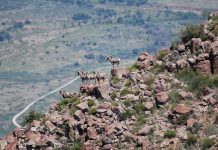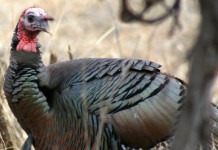The Texas A&M Institute of Renewable Natural Resources is playing an integral role in a new federal, local and private collaboration dedicated to natural resource sustainability for areas surrounding military installations, according to officials.
The institute is assisting the U.S. Department of Agriculture, U.S. Department of Defense and the U.S. Department of the Interior in developing a framework for the nationwide Sentinel Landscapes Partnership, said Bruce Beard, associate director for the institute’s military land sustainability program, in a news release.
Through this partnership, announced recently in Washington, D.C., the three federal departments and other entities will work together in priority areas near military installations, recognizing those areas as “sentinel landscapes.”
Beard said large rural landscapes are vital to sustaining agricultural productivity and protecting wildlife habitat.
“Large landscapes are also important to preparing this country’s military for the challenges of combat,” he said. “However, many training and testing areas, once remote, are now encroached upon by competing demands, such as urban sprawl, habitat fragmentation and energy siting.”
By maintaining certain landscapes such as farms, ranches, timberlands or simply open space, landowners have for years — and without due recognition — significantly contributed to the nation’s defense, according to a Sentinel Landscapes fact sheet. Through thepartnership, landowners will be recognized and rewarded for using their lands in ways that are compatible with the military mission and will be encouraged to continue those land-use practices well into the future.
“The Sentinel Landscape Partnership takes a different approach in applying federal programs to land management challenges, because it promotes working lands, conservation and national defense together,” said Dr. Roel Lopez, the institute’s director, in the release. “Too often, federal programs approach land management objectives in isolation when competing demands often require a more collaborative approach. The Partnership is taking that different approach by looking to see how conservation, working lands and national defense can actually be mutually supportive.”
The first pilot landscape is in the South Puget Sound region of Washington state. Home to Joint Base Lewis-McChord, this region has some of the last remaining native prairie habitat in that state.
The Defense Department, along with the Army, USDA Natural Resources Conservation Service, Interior’s U.S. Fish and Wildlife Service and partner organizations will invest more than $12.6 million to restore and protect prairie habitat on public and private lands. Wildlife habitat will be created and managed to benefit plant and animal species, as well as agricultural production and military readiness, according to a USDA news release.
The institute is part of Texas A&M AgriLife Research and Texas A&M AgriLife Extension Service, and the College of Agriculture and Life Sciences at Texas A&M University in College Station.






















